6 tips to get the most out of the highest-performing digital marketing channel
We see emails every day. But few manage to make an impact and imprint on our memory. It’s not surprising, since running a successful email marketing campaign calls for both creativity and the analytical know-how to make sense of ever-growing amounts of data. That’s why even the savviest marketers can get stuck – especially if they only ever look at their own results.
To get fresh ideas and inspiration, it’s often worth taking a step back to see what others are doing. The new GetResponse Email Marketing Benchmarks report helps by providing plenty of insight into how successful companies create memorable, impactful email campaigns.
Here are five lessons from the report based on the latest email benchmark statistics, in the reports plus actionable tips to try in your own campaigns:
1. Email at the right time
If a billboard is placed beside five others, will people notice it? Or respond to it? Maybe…but it has a better chance when it stands alone. It’s the same with your emails. If you send them at the wrong time, they could end up buried in cluttered inboxes.
To get your audience to respond, you need to get noticed. Catching their eye should be your first goal. So before you write the subject line, figure out the best time to send your email. You’ll then have a much better chance of success.
So when should you hit send?
In the report we see that Thursday is best, followed by Tuesday. Also, messages sent between 9am and 11am, and 3 and 5pm, have the highest open and click-through rates. Around 7pm is another top time.
If you stick to these times, there’s a good chance you’ll see better engagement metrics. Of course, your audience may respond differently. And you could get better results sending at a different day or time. Which brings us to the first tip:
Find out the day and time when your audience is most engaged. Check your historical data and look for patterns. If you don’t see any, run an A/B test and analyze the results.
Once you’ve decided when to send your emails, consider telling your subscribers. They’ll then know when to look out for your updates.
2. Get the frequency spot-on – and don’t go overboard
What’s the top reason people unsubscribe from newsletters? Information overload. They simply get overwhelmed by email, TV and radio ads, social media posts, and other messages.
While it may not be your emails that send them over the edge, it helps to know how often you should contact your subscribers to keep them engaged. But bear in mind that sending too few messages is just as bad as sending too many. If you don’t contact your subscribers for a while, they could forget about you and take their business elsewhere. And if you email too often, they might get tired and filter you out.
In the table above, it’s clear that marketers who send fewer emails in a week get the highest opens and clicks. And while increased frequency sparks a sharp drop in average open-rates, click-through rates seem to decline more gradually.
But what this data doesn’t tell us is how frequency affects the conversion rate. You could find that despite having a drop in opens and clicks, you convert more prospects when sending more messages in the week.
Find out the best frequency for your audience. Simply divide your list into several segments, and send each segment a different amount of messages in the same period.
Then, check how many conversions you generated, and compare them with the unsubscribe and spam complaint rates. You’ll then know whether sending an additional message is worth the potentially higher list churn.
3. Automate…but keep it personal
One of the biggest concerns marketers have about automation is that their emails will seem inauthentic and generic. But this can happen with regular newsletters, too. In both cases, it’s all about taking the time to analyse your data, and carefully craft your messages with subscribers in mind.
Most marketers will agree that targeted communication beats the ‘spray and pray’ approach of sending the same message to all. Yet over 50% of marketers don’t do any targeting. It’s understandable. Most marketers are tight on time and resources, so they tend to stick to the old way of running email campaigns.
That being said, it’s worth giving it a go. As you can see from the report, simply adding personalized subject lines can have a big impact on campaign results – boosting email open rates from 23.82% to 28.46%. also, when you also personalize the email content, your conversions are likely to soar.
You’ll also want to add automated messages to the mix, like autoresponders and triggered emails (which had an average 57.67% open rate and 14.99%, click-through rate – significantly more than regular newsletters).
Set up a targeted email campaign. You can start small – perhaps with a welcome series, which helps you and your audience get to know each other better.
And don’t worry about your campaigns looking robotic. Because welcome emails get up to an 80% average open rate!
4. Try new approaches
We often see marketers sticking to the way things were done when they first joined the company. They’ll keep using old email templates, or engage their audience in the same way.
Maybe that works for some. But finding new ways of keeping in touch can have a big impact on your conversions. Take animated content for example: emails that link to YouTube videos have an average open rate of 31.90% and CTR of 5.56%. Emails linking to Vimeo scored even higher – 47.35% and 12.50% respectively.
Using emojis in email subject lines can also improve your results. But it’s not a big difference: emails with emojis scored an average open rate of 26.67%, compared to 24.07% for those without.
Dare to do things differently. If it’s been a while since you refreshed your communications, now might be the time.
5. Don’t lose “it”
There’s something special about smaller brands that consumers just love. They’re great at having authentic conversations and building strong relationships over time. Often it’s because they’re more flexible, or they care more about each customer. Either way, people are often prepared to pay more for a personal experience.
But as brands grow, they tend to lose touch with their customers. Of course, they still respond on social media and maybe even monitor brand mentions on the web, but the tone of the conversation changes. This is especially obvious when an external agency takes over the marketing
Just take a look at the above chart. In general, the average email campaign results gradually decrease as the email list grows. Among other things, this could happen because marketers struggle to analyse the ever-growing amount of data and fail to target their campaigns, resulting in less personal communication that turns their audience off.
Don’t lose touch with your audience. And if you’re growing fast, don’t forget what made your brand stand out and connect with customers in the first place.
Use onboarding campaigns to ask questions and get to know your audience. You’ll stay in the know, discover what they like and value, and learn how best to communicate with them.
6. Make up your own mind
You can’t trick your way into subscribers’ inboxes. If you want higher engagement, you need to constantly evaluate your campaigns, test new approaches, and make data-driven decisions.
As I said before, it’s easy to get stuck if you only look at your own results. So once in a while, take a step back, see what others are doing, and get inspired.
For a wider range of email benchmarks - see the Smart Insights Email Marketing statistics 2017 roundup
from Blog – Smart Insights http://www.smartinsights.com/email-marketing/email-communications-strategy/email-marketing-benchmarks/
via Tumblr http://euro3plast-fr.tumblr.com/post/165577554044
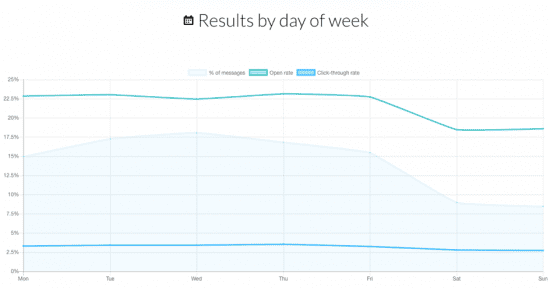
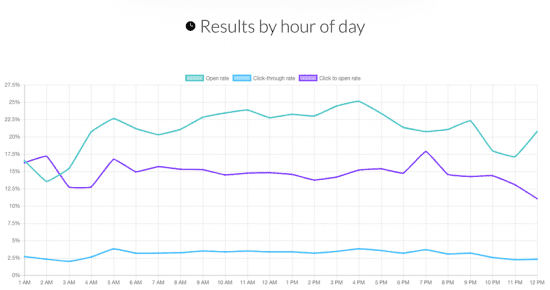
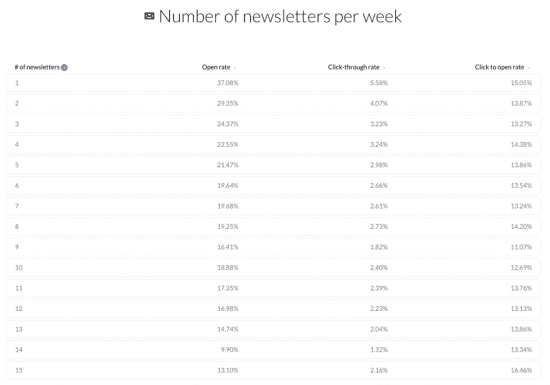
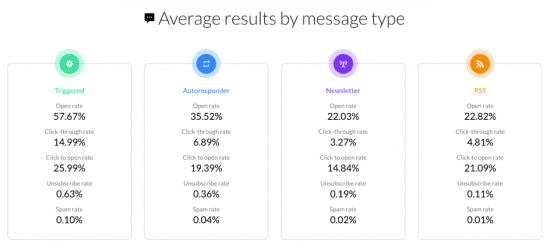
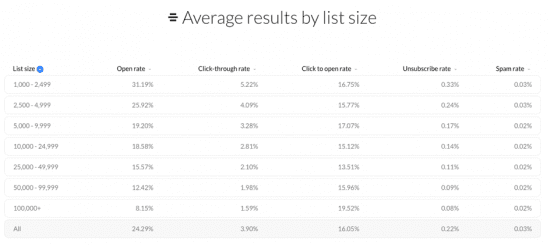
No comments:
Post a Comment